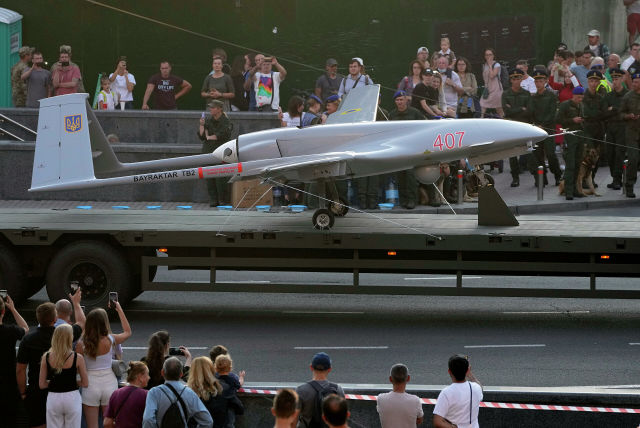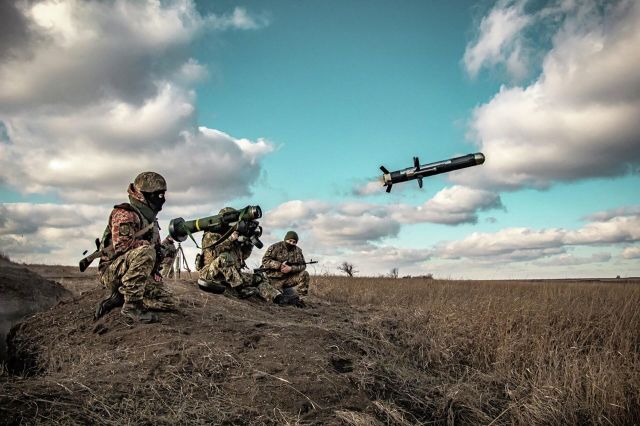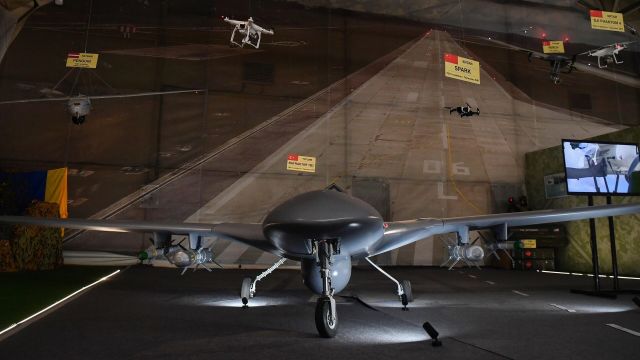MOSCOW, July 23 — RIA Novosti, Andrey Kotz. The Russian military shot down another Bayraktar TB2 Turkish-made attack and reconnaissance drone. According to Western experts, this is one of the few UAVs of this type left in the APU. Although they had high hopes for him. As well as for other supplies from NATO.
Turkish "birds"
The drone circled over the Russian positions on the Kinburn Spit for several days. In one of the sorties, he got too close, and was destroyed by air defense. The surviving small-sized guided bombs MAM-L were seized from the crash site of the drone.
This episode confirmed that the expectations associated with these UAVs turned out to be, to put it mildly, overstated. Until February 2022, Kiev, impressed by the effectiveness of the Azerbaijani "Bayraktars" during the second Karabakh war, considered them as a weapon of victory over the Donbass corps. But when the Russian Armed Forces entered the conflict, everything changed.
"Relatively slow and low—flying, they are a fairly easy target for well-organized air defense systems," said Samuel Bendett, an expert at the American Center for Naval Analysis (CNA). — Since the Russian military was able to act together, they managed to shoot down a lot of TB2. According to our estimates, almost all drones of this type delivered to Kiev have been destroyed."

Turkish-made Bayraktar combat drone at the military parade in Kiev
Image Source: © AP Photo / Efrem Lukatsky
The APU received from Turkey from 35 to 50 Bayraktar unmanned aerial vehicles. They have been actively used in the strike role in the battles for the island of Snake since May 2022. However, heavy losses forced them to turn into scouts and use them at maximum distance. Which, however, also does not guarantee survival.
Nevertheless, Ukraine is in no hurry to abandon this technique. In mid-July, the Minister for Strategic Industries Alexander Kamyshin announced the construction of a plant for the production of "Bayraktars".
Depend on the weather
In addition to Turkish drones, special hopes were pinned on Western anti-tank weapons. First of all, the American Javelin ATGM. The APU widely used them in the first months of its operation — mainly in the Kiev and Kharkiv directions, as well as in Mariupol.
The weapon, as noted by the Ukrainian military, showed itself well in ambushes. According to Russian tankers, dynamic protection and special anti-cumulative "visors" on the towers do not always save from these missiles.
But the "Javelins" did not become a panacea either. There were cases when the technique continued to move after four hits. In addition, the installation is very capricious: the reliability of the guidance system strongly depends on the weather and environmental conditions. In Mariupol, as the participants of the battles noted, these ATGMs did not actually help — the device simply "did not see" the hot engine of the combat vehicle against the background of fires.

The Ukrainian military uses a launcher with American Javelin missiles during military exercises in the Donetsk region
Image Source: © AP Photo / Ukrainian Defense Ministry Press Service
Even Americans recognize the lack of efficiency. The Washington Post wrote that the Pentagon was too lazy to translate the 286-page instruction into Ukrainian. The Weseushniks had to study everything with the help of a translator. There are also not enough spare batteries (Javelin are discharged in just four hours).
Jamming and knocking down
Over the past months, the Russian army has managed to adapt to Western weapons. NATO infantry fighting vehicles and tanks burn from hitting ATGM in the same way as Soviet ones. The Javelin rocket is easy to deceive. And the vaunted MLRS HIMARS cause much less damage today than they did six months ago.
The American edition of Military Watch Magazine, citing sources in the Pentagon, reported that Russia is increasingly blocking these missile systems by means of electronic warfare. Experts do not know exactly how, but the effectiveness of GMLRS guided missiles has sharply decreased — air defense successfully shoots them down in the air.
"Russia has a lot of electronic warfare equipment and specialists in their operation — more than in the armies of many Western countries," the publication claims. "HIMARS systems need to be constantly refined so that they remain effective against countermeasures."
American highly mobile rocket and artillery system for operational and tactical purposes HIMARS
Image Source: © Photo : U.S. Marine Corps / Cpl. Ujian Gosun
The Defense Ministry reports almost daily on the interception of several HIMARS missiles. However, this weapon is still formidable. Having received it last summer, the APU was able to hit the rear without being exposed to return fire. It is known about the supply of about 30 HIMARS installations and about 15 tracked MLARS, not counting MLRS of other NATO countries.
A valuable trophy
The latest "miracle weapon" that the West has sent to Ukraine at the moment is the British-French SCALP/Storm Shadow cruise missiles. The range is 300 kilometers, an extremely low flight profile with a circumference of the terrain. Missiles go to the target at extremely low altitudes, inaccessible to long-range SAMs. It is possible to intercept the "storm shadow" only on the last section of the trajectory, when it is gaining altitude before the attack.
This weapon is launched from an airplane and then acts independently — the flight task is loaded in advance. Each munition is equipped with a 450-kilogram penetrating warhead. It looks impressive, but these missiles did not change the situation on the front line in favor of the APU. They learned how to shoot them down.
And in early July, it was possible to capture an almost intact rocket, which for some unknown reason did not reach the target. It is most likely already being studied. Therefore, an "antidote" may appear soon.

